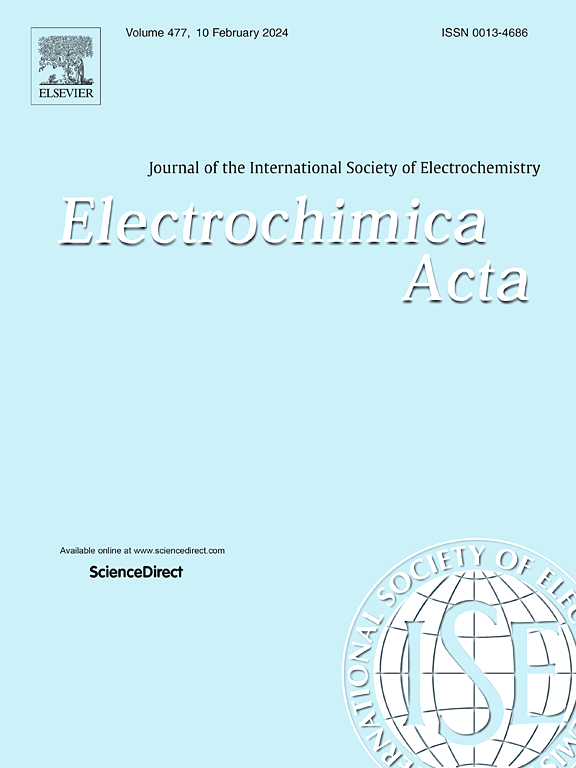High mass loading flower-like crystalline/amorphous NiCo-P/POx/NF as self-supporting cathode for ultra-high-performance nickel-zinc batteries
IF 5.5
3区 材料科学
Q1 ELECTROCHEMISTRY
引用次数: 0
Abstract
The aqueous nickel-zinc battery combines the advantages of battery-level energy density and capacitor-level power density, which has been anticipated since its advent. However, given the limitations imposed by the relatively low capacity and subpar conductivity of the cathode, Ni-Zn batteries have unsatisfactory energy density and cycle life. This work has fabricated in situ a flower-like crystalline/amorphous nickel-cobalt phosphide/phosphate on nickel foam (NiCo-P/POx/NF), which acts as a binder-free cathode for the advanced aqueous Ni-Zn battery. NiCo-P/POx/NF inherits the flower-like structure of its predecessor, which can expose more active sites. Amorphous NiCoPOx encases isolated crystalline NiCoP nanoparticles, and this particular structure can handle the volume expansion caused by long-term cycling. Consequently, the NiCo-P/POx/NF electrode achieves an ultra-high areal capacitance of 23.4 F·cm−2 at a high mass loading of 12.0 mg·cm−2 and demonstrates excellent cycling stability, retaining 80 % after 8000 cycles. The NiCo-P/POx/NF//Zn battery exhibits an area energy density of 4.05 mWh·cm−2 and a peak power density of 32.57 mW·cm−2, which are considerably higher than the values for most of the previously reported aqueous Ni-Zn batteries. This work offers a feasible strategy for developing aqueous alkaline Ni-Zn batteries featuring high energy and power densities.


高质量负载花状晶/非晶NiCo-P/POx/NF作为超高性能镍锌电池的自支撑阴极
含水镍锌电池结合了电池级能量密度和电容器级功率密度的优点,这是人们自问世以来一直期待的。然而,由于相对较低的容量和阴极电导率的限制,镍锌电池的能量密度和循环寿命令人不满意。本研究在原位制备了一种花状晶体/非晶镍钴磷化物/磷酸盐泡沫镍(NiCo-P/POx/NF),作为先进的水性镍锌电池的无粘结剂阴极。NiCo-P/POx/NF继承了其前身的花状结构,可以暴露更多的活性位点。无定形NiCoPOx包裹着孤立的晶体NiCoPOx纳米颗粒,这种特殊的结构可以处理长期循环引起的体积膨胀。因此,NiCo-P/POx/NF电极在12.0 mg·cm−2的高质量负载下获得了23.4 F·cm−2的超高面积电容,并表现出优异的循环稳定性,在8000次循环后保持80%的稳定性。NiCo-P/POx/NF//Zn电池的面积能量密度为4.05 mWh·cm−2,峰值功率密度为32.57 mW·cm−2,大大高于之前报道的大多数水性Ni-Zn电池。本研究为开发具有高能量和功率密度的碱性镍锌水电池提供了可行的策略。
本文章由计算机程序翻译,如有差异,请以英文原文为准。
求助全文
约1分钟内获得全文
求助全文
来源期刊

Electrochimica Acta
工程技术-电化学
CiteScore
11.30
自引率
6.10%
发文量
1634
审稿时长
41 days
期刊介绍:
Electrochimica Acta is an international journal. It is intended for the publication of both original work and reviews in the field of electrochemistry. Electrochemistry should be interpreted to mean any of the research fields covered by the Divisions of the International Society of Electrochemistry listed below, as well as emerging scientific domains covered by ISE New Topics Committee.
 求助内容:
求助内容: 应助结果提醒方式:
应助结果提醒方式:


